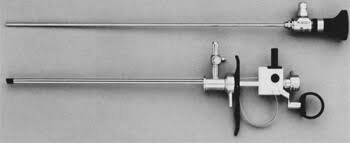
"Hysteroscopy for Treating Uterine Adhesions – Dr. Mohamed Azab"
Published on: 2025-06-19 | Written by: Dr. Mohamed Azab Consultant in IVF Endoscopy,
Infertility is a concern that troubles many couples, and the cause is sometimes unclear without precise diagnostic tools. This is where hysteroscopy becomes an effective method for both diagnosis and treatment. In this article, we explore the importance of this technique based on the expertise of Dr. Mohamed Azab, Consultant in IVF, Advanced Endoscopy, and High-Risk Pregnancy.
What is Hysteroscopy?
Hysteroscopy is a simple medical procedure where a thin tube with a camera is inserted into the uterus to thoroughly examine the uterine cavity. It plays a crucial role in identifying the underlying causes of infertility.
How Does Hysteroscopy Help Diagnose Infertility?
According to Dr. Mohamed Azab, Consultant in IVF, Advanced Endoscopy, and High-Risk Pregnancy, hysteroscopy helps detect:
-
Intrauterine adhesions
-
Polyps or fibroids
-
Congenital uterine anomalies
-
Residual tissue from previous pregnancies affecting fertility
These factors may go undetected with traditional imaging, while hysteroscopy allows for highly accurate diagnosis.
Treating Adhesions with Hysteroscopy:
Dr. Mohamed Azab confirms that treating uterine adhesions via hysteroscopy is among the most successful and minimally invasive interventions. Adhesions are removed using very fine tools, eliminating the need for open surgery.
When is Hysteroscopy Recommended?
Dr. Mohamed Azab, Consultant in IVF, Advanced Endoscopy, and High-Risk Pregnancy, recommends hysteroscopy in the following cases:
-
Unexplained infertility
-
Recurrent miscarriage
-
Inconclusive ultrasound or imaging results
-
Suspected intrauterine polyps or fibroids

